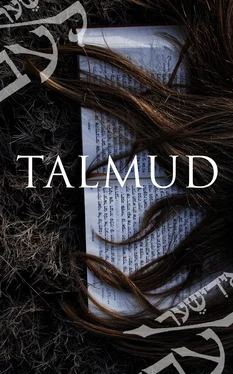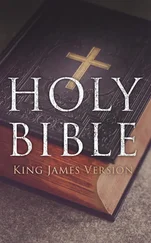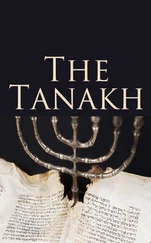MISHNA: When a father and son have seen the new moon, they must both go to the Beth Din, not that they may act together as witnesses, but in order that, should the evidence of either of them be invalidated, the other may join to give evidence with another witness. R. Simeon says: Father and son, and relatives in any degree may be accepted as competent witnesses to give evidence as to the appearance of the new moon. R. Jose says: It once happened that Tobias, the physician, his son, and his freed slave saw the new moon in Jerusalem (and when they tendered their evidence), the priests accepted his evidence and that of his son, but invalidated that of his freed slave; but when they appeared before the (Beth Din) they received his evidence, and that of his freed slave, but invalidated that of his son.
GEMARA: Said R. Levi: What is the reason for R. Simeon's decree? It is written [Ex. xii. 1]: "And the Lord spake unto Moses and Aaron saying, This month shall be unto you ," which means, this evidence shall be acceptable from you (although you are brothers). And how do the rabbis interpret it? They explain it as follows: This testimony shall be placed at your disposal ( i.e. , the Beth Din's). Says Mar Uqba in the name of Samuel, the Halakha prevails according to R. Simeon. MISHNA: The following are considered incompetent to be witnesses: gamblers with dice, usurers, pigeon breeders, 1those who deal with the produce of the sabbatic year, and slaves. This is the rule: All evidence that cannot be received from a woman cannot be received from any of the above. One who has seen the new moon, but is unable to go (to give evidence), must be brought (if unable to walk) mounted on an ass, or even in a bed. 2Persons afraid of an attack by robbers may take sticks with them; 2and if they have a long way to go, it will be lawful for them to provide themselves with and carry their food. 2Whenever (witnesses) must be on the road a day and a night, it will be lawful to violate the Sabbath to travel thereon, to give their evidence as to the appearance of the moon. For thus it is written [Lev. xxiii. 4]: "These are the feasts of the Lord, the holy convocations, which ye shall proclaim in their appointed seasons .
Footnotes
1This refers to the law concerning vows. If one made a vow it had to be fulfilled before the three festivals elapsed in the order of Passover, Pentecost, and Tabernacles, as will be explained further on.
2A date had to be appointed in order to keep the tithes of animals born and products of the earth, distinct from year to year.
3Vide Lev. xxv. and Deut. xv.
4With regard to the prohibition of eating fruit of newly planted trees [Lev. xix. 23-25].
5So as not to mix the tithe of herbs from year to year.
6With regard to the tithe due on fruit trees.
7The Gemara fully discusses the reasons for these institutions, but we deem it wise to anticipate, for the sake of clearness.
1No reference should be made after the first of Nissan to the reign of the king just deceased. For instance: it was not permitted to speak of the year beginning with Nissan, as the second year after the death of the king.
1The statement of R. Papa is quoted here, because it is a rule of the Talmud that no comparisons by analogy may be cited unless they emanate from a tradition or teaching known to the master making such a comparison, and this rule applies throughout the Talmud.
2Because the life of the righteous is a protection for the whole people.
1The Rabbis of the Talmud must have had a different version of the book of Haggai from that existing at present. In the second passage quoted, namely Haggai ii. 1, the words "in the second year" cannot be found. There is, therefore, a great difficulty in understanding the discussion. Even Rashi is unable to enlighten us on this point.
2This law of "Thou shalt not slack to pay," is known as "BAL TE'AHER"; i.e. , the law against procrastination or delay.
1Lev. xxiii, 22.
1The privilege of bringing on one of the later days of a festival a sacrifice that should have been offered on the first day.
1Lev. xxvii. 32.
1Leap year occurs seven times in a cycle of nineteen years. On such occasions one month, the second Adar, is added to the twelve lunar months.
1As soon as Nissan had been consecrated, there could be no further debate about making the past year intercalary, for once the new month had been called Nissan, it was forbidden to call it by any other name.
1The TAMID or daily offering could not be presented to the Temple by an individual.
1This is the literal translation of the verse in Psalms; the free translation is "at the appointed time," according to Isaac Leeser.
1 i.e. , the jubilee year is, at the same time, the fiftieth year of the last and the first of the coming series.
1TEQUPHA--Solstice or equinox; hence, the period of three months, which elapses between a solstice and the next equinox, is also called TEQUPHA. Mar Zutra reads the biblical term Tequphoit in the plural.
1Tithes must be given even to-day, according to the Rabbinical law, throughout Palestine and Syria.
It was the duty of the Israelite to give of his produce the following offerings and tithes: (1) THERUMA, a heave-offering, to be given to the priest every year; the measure was not fixed by the Bible; (2) MAÄSER RISHON, or first tithe, to be given every year to the Levite; (3) MAÄSER SHENI, or second tithe, was to be taken in the second year to Jerusalem and eaten there, or to be converted into money, which was to be spent there; (4) MAÄSER ANI, or the poor tithe, to be given in the third year.
1The opinion of R. Gamaliel is stated a little further on.
2Produce of which the levitical and priestly tithe has not been yet separated, and which must not be used.
1Vide Introduction.
1These are the divisions of the Additional Service for the New Year's Day. The Malkhioth consist of ten scriptural passages in which God is proclaimed King. The Zikhronoth consist of an equal number of scriptural passages in which Divine remembrance is alluded to. The Shophroth are a similar series of selections in which the Shophar (cornet) is referred to. In Chapter IV. of this tract there is a discussion as to the composition of these selections. We retain the Hebrew names, because we feel that no translation or paraphrase will adequately express what they mean.
2This is taken from Tract Baba Kama.
1There were sects at that time who did not wear the phylacteries on the frontal bone, but on other places. The people here referred to are those mentioned in Mishna Megillah III. 5. Those who do not wear phylacteries at all are, under no circumstances, included under the head of these transgressors. ( Vide Tosaphoth, ad loc.) For fuller information the reader is referred to our "The History of Amulets, Charms, and Talismans" (New York, 1893).
1See Slekalim I. i.
2 e.g. Tabernacles. This was necessary since the Beth Din might have made the month intercalary.
3 Vide , Numb. ix. 10, 11.
1By adding an intercalary day to Elul, the holiday (New Year or Atonement Day) was prevented from falling on Friday or Sunday, the intention being to separate the holiday by an intervening day from the Sabbath. Thus, herbs that were to be eaten fresh, and other foods, would not spoil, as they might, if kept from Thursday till after the Sabbath.
2A similar practice was followed with regard to the keeping of a dead body over the Day of Atonement and a Sabbath. Since it was impossible to keep the dead body two days, the Sabbath and the Atonement Day were separated by the means of the intercalated day.
1 i.e. if there be a doubt about which day is the Passover or the feast of Tabernacles, the festival should be kept for two days; not, however, by ante-dating and keeping the fourteenth and fifteenth (of Nissan or Tishri) but by post-dating and keeping the fifteenth and sixteenth of either month.
Читать дальше












